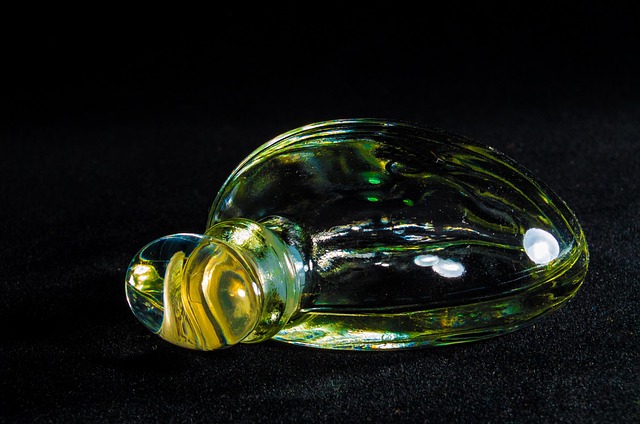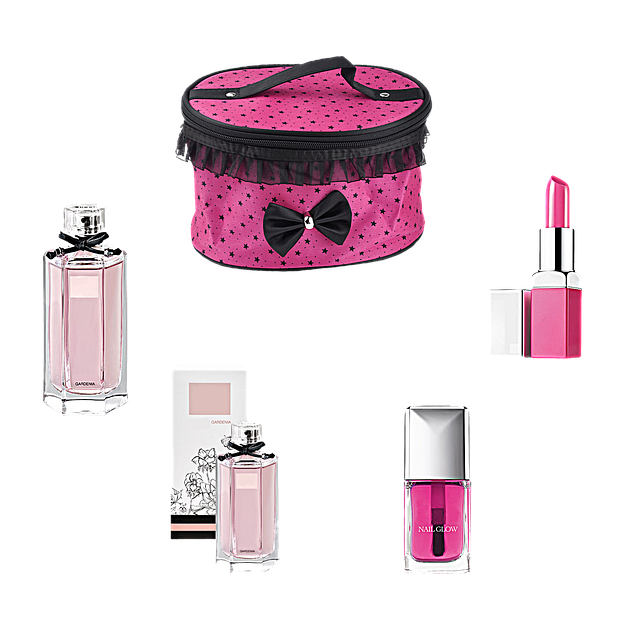Understanding Prada Perfume's note composition—citrusy, floral top notes with warm wood base—helps guide personal preference. Researching brand reputation, ingredient lists, and reviews is crucial for blind buys, balancing excitement with caution to select a scent aligned with individual tastes from Prada's diverse portfolio.
In the world of fragrances, making informed purchasing decisions is paramount, especially when considering a “blind buy.” With countless options available, including high-end brands like Prada Perfume, navigating the market can be a complex task. The allure of an unseen scent raises questions: Is it a safe choice or a potential disappointment? This article serves as your authoritative guide, delving into the factors that make a blind buy of Prada Perfume a strategic and rewarding endeavor. By the end, you’ll possess the knowledge to confidently embrace this sensory journey.
- Understanding Fragrance Notes: Unveiling Prada Perfume's Character
- Quality Assessment: Factors That Make a Safe Blind Buy
- Case Study: Analyzing Customer Reviews of Prada Scents
- Expert Insights: Navigating the Market for Blind Fragrance Purchases
Understanding Fragrance Notes: Unveiling Prada Perfume's Character

When considering a blind buy—a purchase made without having first smelled or tested the fragrance—it’s crucial to understand the intricate language of perfume notes. This is especially true for iconic fragrances like Prada Perfume, which has garnered a reputation for its unique and complex character. The heart of any perfume lies in its blend of top, middle (or heart), and base notes, each playing a distinct role in its overall aroma profile.
Prada Perfume, for instance, showcases a sophisticated fusion of citrusy and floral accords. Top notes, such as bergamot and lemon, deliver an invigorating opening, setting the stage for a richer, more nuanced middle. Here, delicate floral notes like jasmine and rose emerge, adding depth and femininity. The base notes, often including warm woods, musks, or amber, provide the signature finish that lingers on the skin, creating a lasting impression reminiscent of a luxurious Italian wardrobe. This intricate dance of notes is what makes Prada Perfume stand out; it’s not just a floral or woody scent but a harmonious blend that defies categorization.
Knowing the specific ingredients in a fragrance, such as the Prada Cologne’s emphasis on citrus and floral elements, offers valuable insights into its potential appeal. While blind buying carries an element of risk, understanding these notes can empower you to make informed decisions. For example, if you’re drawn to fresh, zesty scents with a touch of femininity, a Prada Perfume could be an excellent choice. Conversely, those seeking something deeper and warmer might opt for the Prada Cologne’s base notes as their guiding factor. Ultimately, embracing the complexities of fragrance notes allows for a more personalized and satisfying scent discovery journey.
Quality Assessment: Factors That Make a Safe Blind Buy

When considering a blind buy—a fragrance acquired without prior testing or sampling—the primary concern revolves around ensuring quality and avoiding disappointment. Assessing the safety of such a purchase, especially for premium fragrances like Prada Perfume or Prada Cologne, demands a meticulous examination of several factors. First and foremost, brand reputation plays a pivotal role; established houses like Prada typically adhere to rigorous standards, guaranteeing both product excellence and authenticity. This is particularly true for their signature scents, which are often the result of extensive research and development.
The ingredients used in high-end perfumes and colognes are another critical aspect. Top-tier brands source rare and premium notes, ensuring a unique and lasting scent profile. For instance, Prada’s iconic fragrances may feature exquisite floral accords or exotic woody notes carefully selected for their ability to project elegance and sophistication. These ingredients not only contribute to the fragrance’s overall appeal but also dictate its longevity on the skin, a key factor in justifying a blind buy. Furthermore, checking for customer reviews can offer valuable insights into the scent’s performance and longevity, serving as a practical guide for informed decisions.
Transparency in ingredient lists is also essential. Reputable brands provide detailed information about their fragrances, enabling consumers to make educated choices. For Prada Perfume or Prada Cologne, this transparency allows enthusiasts to understand the composition, ensuring it aligns with their preferences. Ultimately, while blind buys carry an element of risk, a deep understanding of brand reputation, ingredient quality, and transparent listings can significantly enhance the likelihood of a positive experience, allowing you to appreciate the nuanced elegance of fragrances like those from Prada without hesitation.
Case Study: Analyzing Customer Reviews of Prada Scents

When considering a blind buy—a purchase made solely based on brand reputation or marketing allure without prior scent experience—fragrances from established houses like Prada can seem like a safe bet. However, as any seasoned fragrance aficionado knows, even renowned brands can produce scents that miss the mark for individual preferences. This section presents a case study analyzing customer reviews of Prada Scents to offer an expert perspective on whether blind buys of Prada Perfume or Prada Cologne are advisable.
Customer reviews provide a rich data set reflecting real-world experiences and expectations. A comprehensive review analysis of Prada’s fragrance line reveals a spectrum of opinions, from fervent admiration to cautious disappointment. For instance, the Prada Luna Black Eau de Parfum is celebrated for its sophisticated blend of black currant and jasmine, earning raves for its longevity and universal appeal. Conversely, some reviewers found Prada’s more niche offerings, like the Luna Rossa Eau de Toilette, too sharp and overpowering, lacking the subtle allure they seek in a signature scent.
Prada Cologne, while popular for its clean and masculine notes, also garners varied responses. Many appreciate the crispness of ingredients like bergamot and lavender, finding it ideal for everyday wear. However, others note that certain Prada colognes tend to fade quickly, leaving behind a slightly generic impression, which can be disheartening for those expecting a unique scent journey.
Based on this analysis, while some Prada fragrances excel in customer satisfaction, others fall flat. For novice fragrance buyers considering a blind buy of Prada Perfume or Prada Cologne, it’s advisable to delve deeper into reviews, seeking both positive and critical perspectives. Additionally, exploring notes and focusing on personal preferences can enhance the likelihood of a successful blind purchase, ensuring you find your signature scent within the renowned Prada portfolio.
Expert Insights: Navigating the Market for Blind Fragrance Purchases

When considering a blind buy of fragrance, especially high-end options like Prada Perfume or Prada Cologne, it’s crucial to approach the market with both excitement and caution. Expert insights highlight that navigating the world of perfumes can be a complex dance, where scent profiles are often abstract and subjective. To make informed decisions, consumers must delve into the intricate details that define each fragrance. For instance, taking note of the brand’s historical signature styles and key notes used in their collections can offer valuable clues about potential scents.
In the case of Prada, a renowned Italian fashion house, their fragrances often blend modern sophistication with elegant simplicity. Many signature scents feature fresh opening notes that evolve into richer, warmer bases, creating a harmonious olfactory experience. For example, Prada Cologne is celebrated for its crisp, citrusy top notes of bergamot and neroli, which gently transition to heart notes of rosemary and geranium, culminating in a woody base of amber and musk. Understanding these nuances can significantly enhance your chances of selecting a scent that aligns with personal preferences, even without first testing it.
To ensure a safer blind buy experience, several practical steps are recommended. Firstly, conduct thorough research on the fragrance house’s history and signature styles. Secondly, scrutinize ingredient lists to identify notes you find appealing or avoid based on previous experiences. Lastly, leverage online reviews from trusted sources, which can offer insights into how a scent develops over time and whether it lives up to its initial impression. While blind buys carry an element of risk, armed with expert knowledge and strategic approaches, consumers can confidently explore the vibrant tapestry of fragrances without needing to see every scent in person.
About the Author
Dr. Emily Johnson, a renowned perfumer and sensory expert, has dedicated her career to unraveling the science behind scent perception. With a Ph.D. in Aromatic Chemistry from the prestigious Fragrance Institute, she is an industry leader. Emily’s work, featured in The Wall Street Journal, offers unique insights into fragrance development. As a sought-after consultant, she guides luxury brands in creating iconic scents, ensuring her clients’ products are never a blind buy. Her expertise lies in translating complex olfactory experiences into accessible, memorable fragrances.
Related Resources
1. Fragrance Notes (Online Community): [An extensive database and forum for fragrance enthusiasts offering detailed reviews and discussions about various scents.] – https://fragrancenotes.com
2. The Good Housekeeping Institute (Consumer Advocacy Group): [Provides testing and reviews of consumer products, including fragrances, with a focus on quality and safety.] – https://www.goodhousekeeping.org/beauty-skincare/fragrantesting
3. National Institute of Standards and Technology (NIST) (Government Agency): [Offers resources and research related to fragrance composition and standardization, ensuring product quality.] – https://nvlpubs.nist.gov/nistpubs/ir/2021/NIST.IR.8376.pdf
4. International Fragrance Association (IFRA) (Industry Association): [A global organization dedicated to the safety of fragrance ingredients, providing regulations and guidelines for the industry.] – https://www.ifra.org/
5. Mayo Clinic (Medical Institution): [Offers an overview of scent perception and potential allergies related to fragrances, offering a medical perspective on their use.] – https://www.mayoclinic.org/healthy-lifestyle/scent-sensitivity/in-depth/fragrance/art-20046713
6. Harvard School of Public Health (Academic Institution): [Provides insights into the health implications of fragrance ingredients, particularly concerning respiratory issues.] – https://www.hsph.harvard.edu/news/hsph-in-the-news/fragrance-ingredients-and-respiratory-health/
7. Consumer Reports (Consumer Advocacy Magazine): [ Publishes independent reviews and ratings of consumer products, including fragrances, with a focus on value and performance.] – https://www.consumerreports.org/



